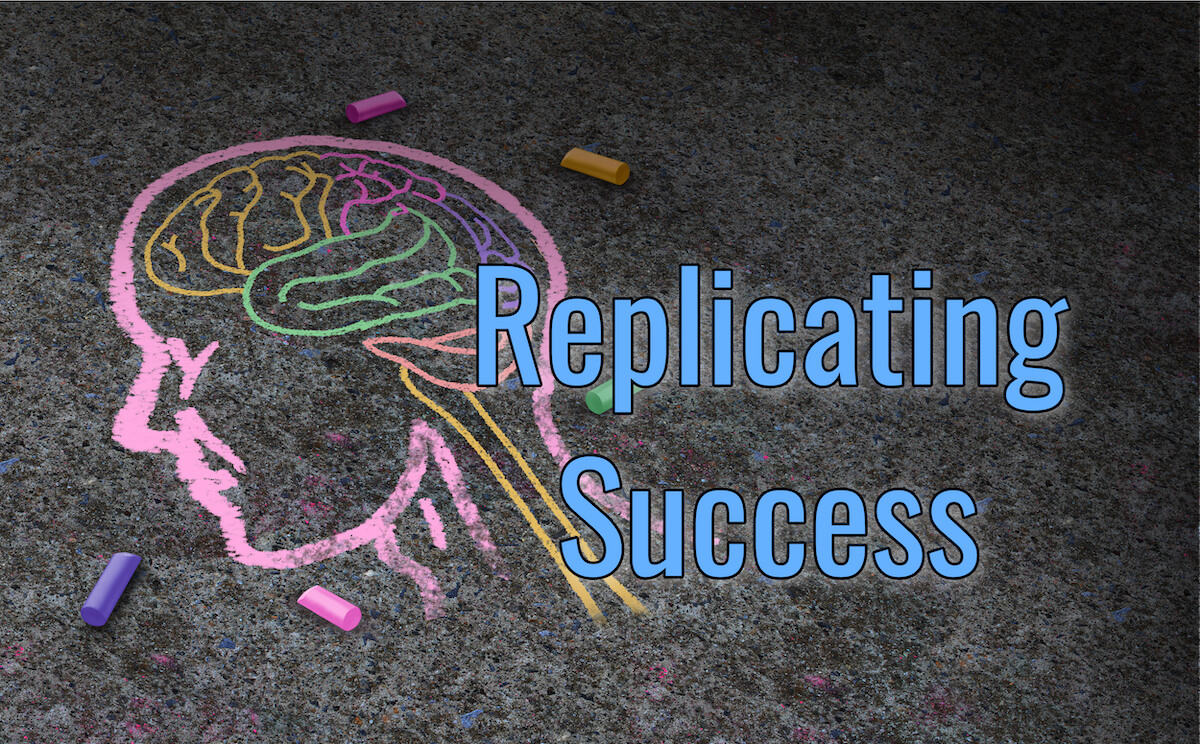Replicating something is done by taking a model and copying it. To become a successful trader, beginners should replicate, or model, a successful trader. But what does it take to replicate Success?
The Model
To replicate a model, we need first to define and subdivide it into sub-processes or tasks. According to Dr. Van K. Tharp, the needed subtasks required to master to become a successful trader are:
The trading process
- The process of trading
- The process of developing a trading system that fits the trader
- The process of objective definition and risk management
- The process of a business plan as a document that guides decision-making.
Of course, to aim for excellence, we need to model the best traders in class.
The first step is to subdivide the model into sub-tasks. Once the tasks have been defined, we need to attach beliefs, mental states, and mental strategies for each one. The purpose is to duplicate the way a successful trader thinks and acts. If we can achieve this feat, we are sure the results can be replicated.
The beliefs
According to Dr. Tharp, beliefs act as the first filter to transform the information coming from the world. Beliefs, meanings, categorizations, and comparisons determine how people perceive the real world. What a trader expects from the market depends largely on his beliefs about it. That which is called market sentiment is really “market beliefs.”
Since beliefs are filters to reality, it is wise to classify them, by asking ourselves the following
- Where did this belief come from?
- How useful is it?
- How does it limit my actions?
This process helps us keep and improve valuable beliefs and get rid of un-useful ones.
Mental States
The next step to generate success is duplicating the mental state of top traders. It has to do with discipline and emotional control. When people carry their mental problems to trading their results usually come from an improper mental state, not suited to trading:
- I’m impatient and always get in too early
- I get mad at markets. They seem to know when I trade just to do the opposite
- I’m afraid the market is against me now that I’m wining
- I get too excited when I’m winning and don’t get out in time.
Controlling these states is not the solution to solve all problems. It is just one part of it. Dr. Van K. Tharp tells that in the ideal model to the trading success, each task has an optimal mental state attached to it.
Mental Strategies
A mental strategy is a sequence of thoughts that go from a stimulus coming any of your senses to output or action. Let’s create an example with two possible mental strategies for the same stimulus to better understand the concept.
Mental Strategy One:
- perceiving a trading signal
- realizing it is a known signal
- Think about what can go wrong if you take it
- Visualize the scenario
- Feel afraid
Mental Strategy Two
- Perceiving the Signal
- Recognize it as part of your system
- Feel good your system delivers you a new opportunity
- Take it and trade
What do you think is the right strategy for trading? Could you take action and trade consistently using mental strategy one?
As in the case of the mental states, each trading task requires an optimal mental strategy to optimize the results. That will be developed in future articles.
Further Reading: Peak Performance Course Book 1- How to use Risk, Van K. Tharp.





